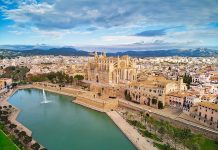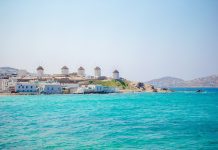The eternal city is one of the most beautiful cities in Europe. It has everything you’d want in a modern city and its history serves as an attraction for visitors who take tours and explore the city. Rome tours usually get tourists from the ruins of the glorious days of the Roman Empire to the Renaissance and Baroque buildings of the historic center, Rome is a glorious architectural mosaic, a real masterpiece.
Sistine Chapel and Vatican Museums (Cappella Sistina & Musei Vaticani)
The Sistine Chapel was built as a private chapel at the request of Sixtus (or Sistan) the fourth and that how it took its name. The long wait to enter the Sistine Chapel is worth is definitely worth it! Just take a look at the display of the “Genesis” and especially the “Creation of Adam” by Michelangelo and you’ll figure out why. The artist was commissioned to paint the ceiling frescoes and the project was completed in October 1512. Although the Renaissance frescoes are overshadowed by the work of Michelangelo, they are still masterpieces of great artists such as Michelangelo’s teacher, Domenico Bigordi detto il Ghirlandaio.

While here, you should also visit “Raphael’s Rooms” (Stanze di Rafaello), four rooms in the Vatican Apostolic Palace decorated with frescoes and the Gregorian Etruscan Museum (Museo Gregoriano Etrusco) that has eight rooms and exposes Etruscan archaeological excavations findings. Some of these are vases , sarcophagi , bronze items and the famous Guglielmo Collection (Collezione Guglielmi), as well as the Museum of Pius and Clement (Museo Pio-Clementino).
Colosseum (Colosseo)
The Colosseum is located close to the fourth century’s Arch of Constantine and it’s 186m in length and 153m in width. Emperor Vespasian began its construction in 72 A.D and it was completed eight years later by his son Titus. To celebrate its opening, Titus held a series of matches that lasted 100 days, during which 5,000 animals were slaughtered. You can explore the vast amphitheater that has 50,000 seats and the underground chambers where gladiators and beasts were kept. These ‘games’ were declared illegal at the fifth century and the marbles as well as the stage was looted during the Middle Ages.
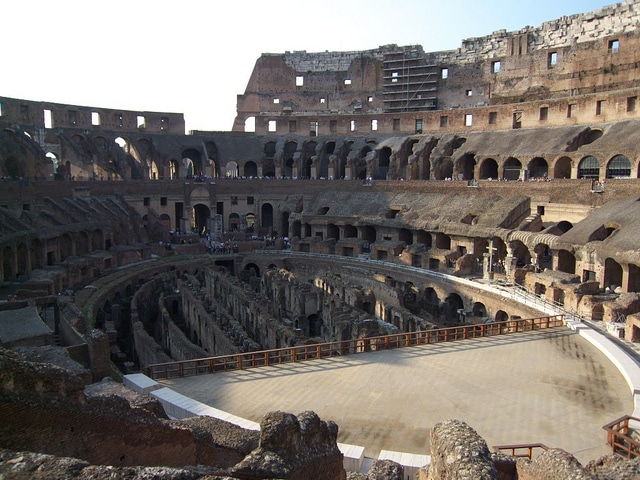
Trevi Fountain (Fontana di Trevi)
According to the legend a virgin girl discovered a three-way fountain and that was the reason the Trevi Fountain was built. It is the largest fountain in the city built in baroque style, with a height of 26.3 m and a width of 49.15 m. It was designed by Nicolò Salvi for Pope Clement the 12th and was completed in 1762. The central figure of the fountain is Neptune, the god of the sea, who is flanked by two Tritons guiding two seahorses. One Triton tries to tame a very worry hippo-campus while the other drives a much calmer animal and that’s a symbolism for the different moods of the sea. On the left there is a statue of the goddess of Abundance holding the horn of plenty. On it there is an imprint depicting Agrippa ordering his generals to build the aqueduct. In the right part there is the statue of Hygeia, which has an imprint depicting a virgin girl showing soldiers the water fountain.
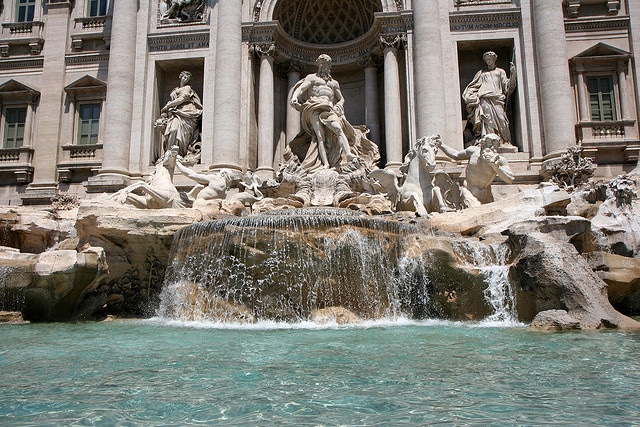
A usual practice done by tourists is throwing a coin behind their backs on the fountain and making two wishes, a secret one and one dedicated to coming back to Rome. It is estimated that about € 3000 are thrown in a daily basis. If you’d like to avoid the crowd visit the fountain early in the morning or late in the evening.
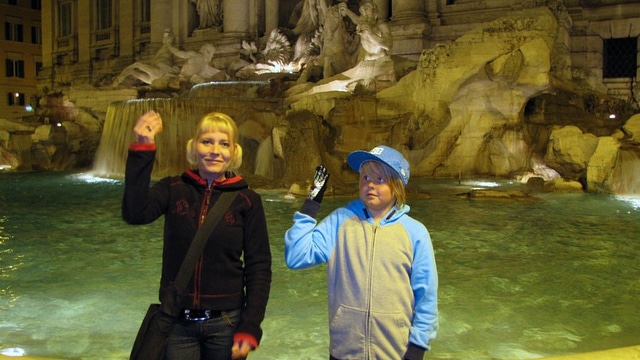
Creation of Adam: Ramon Stoppelenburg
Colosseum: Sébastien Bertrand
Fontana di Trevi: Adrian Drumea and Markus Kivela




